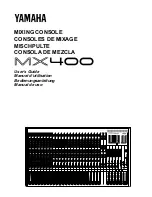
6. Maintenance
WARNING
Voltage may be connected at standstill inside the
terminal box for heating elements or direct winding
heating.
WARNING
The capacitor in single-phase motors can retain a
charge that appears across the motor terminals, even
when the motor has reached standstill.
WARNING
A motor with frequency converter supply may
energize even if the motor is at standstill.
6.1 General inspection
1. Inspect the motor at regular intervals, at least once a
year. The frequency of checks depends on, for example,
the humidity level of the ambient air and on the local
weather conditions. This can initially be determined
experimentally and must then be strictly adhered to.
2. Keep the motor clean and ensure free ventilation
airflow. If the motor is used in a dusty environment,
the ventilation system must be regularly checked and
cleaned.
3. Check the condition of shaft seals (e.g. V-ring or radial
seal) and replace if necessary.
4. Check the condition of connections and mounting and
assembly bolts.
5. Check the bearing condition by listening for any unusual
noise, vibration measurement, bearing temperature,
inspection of spent grease or SPM bearing monitoring.
Pay special attention to bearings when their calculated
rated life time is coming to an end.
When signs of wear are noticed, dismantle the motor,
check the parts and replace if necessary. When bearings
are changed, replacement bearings must be of the same
type as those originally fitted. The shaft seals have to be
replaced with seals of the same quality and characteristics
as the originals when changing bearings.
In the case of the IP 55 motor and when the motor
has been delivered with a plug closed, it is advisable to
periodically open the drain plugs in order to ensure that
the way out for condensation is not blocked and allows
condensation to escape from the motor. This operation
must be done when the motor is at a standstill and has
been made safe to work on.
6.1.1 Standby motors
If the motor is in standby for a longer period of time on
a ship or in other vibrating environment the following
measures have to be taken:
1. The shaft must be rotated regularly every 2 weeks (to
be reported) by means of start up of the system. In case
a start up is not possible, due to any reason, at least
the shaft has to be turned by hand in order to achieve
a different position once a week. Vibrations caused by
other vessel's equipment will cause bearing pitting which
should be minimized by regular operation / hand turning.
2. The bearing must be greased while rotating the shaft
every year (to be reported). If the motor has been
provided with roller bearing at the driven end the
transport lock to be removed before rotating the shaft.
The transport locking must be remounted in case of
transportation.
3. All vibrations must be avoided to prevent a bearing from
failuring. All instructions in the motor instruction manual
for commissioning and maintenance have to be followed
additionally. The warranty will not cover the winding and
bearing damages if these instructions have not been
followed.
6.2 Lubrication
WARNING
Beware of all rotating parts!
WARNING
Grease can cause skin irritation and eye
inflammation. Follow all safety precautions specified
by the manufacturer.
Bearing types are specified in the respective product
catalogs and on the rating plate of all motors except
smaller frame sizes.
Reliability is a vital issue for bearing lubrication intervals.
ABB uses mainly the L
1
-principle (i.e. that 99% of the
motors are certain to make the life time) for lubrication.
6.2.1 Machines with permanently
greased bearings
Bearings are usually permanently greased bearings of 1Z,
2Z, 2RS or equivalent types.
As a guide, adequate lubrication for sizes up to 250 can be
achieved for the following duration, according to L
10
.
EN-14
ABB Motors and Generators |
Low voltage motor manual 01-2009















































